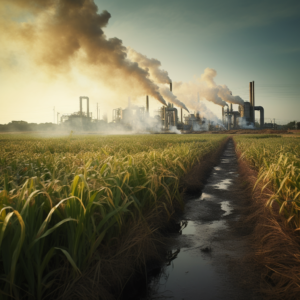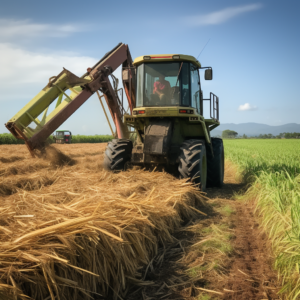Manual vs. Mechanical Harvesting of Sugarcane: An Agricultural Evolution
Introduction
Sugarcane, a tropical grass species, has been cultivated for thousands of years. The way we harvest this vital crop has evolved significantly, especially with the advent of modern technology. Two primary methods exist today: manual harvesting and mechanical harvesting. Let’s delve into how these methods differ and their respective impacts on agriculture.

Manual Harvesting
Manual harvesting of sugarcane is a traditional method that involves labor-intensive work. This method has deep roots in agricultural history and is still prevalent in many parts of the world, especially where small-scale farming dominates.
- Labor-Intensive: It requires significant human effort, with workers using machetes or similar tools to cut the cane.
- Selective Harvesting: Farmers can selectively harvest mature cane while leaving younger plants to grow, potentially leading to better crop management.
- Lower Initial Cost: It doesn’t require expensive machinery, making it accessible for small-scale farmers.
- Environmental Impact: Manual harvesting often involves burning the fields to remove leaves and pests before cutting the cane, which can have environmental consequences.
Mechanical Harvesting

The advent of mechanical harvesting revolutionized sugarcane agriculture. It involves the use of specialized machines to cut and collect the cane.
- Efficiency: Machines can harvest large areas quickly, significantly increasing productivity.
- Cost-Effectiveness: While the initial investment is high, mechanical harvesting reduces labor costs in the long run.
- Reduced Selectivity: Machines may not differentiate between mature and immature cane, potentially affecting yield quality.
- Environmental Considerations: Mechanical harvesting usually eliminates the need for pre-harvest burning, reducing air pollution. However, heavy machinery can compact soil and affect its health.
Economic and Social Implications
The choice between manual and mechanical harvesting isn’t just about efficiency. It has profound economic and social implications.
- Employment: Manual harvesting provides employment to many, especially in rural areas. Transitioning to mechanical harvesting can lead to job losses.
- Skill Development: Mechanical harvesting requires a different skill set, potentially offering new job opportunities in machine operation and maintenance.
Conclusion
The debate between manual and mechanical harvesting of sugarcane isn’t a clear-cut one. While mechanical harvesting offers efficiency and environmental benefits, manual harvesting remains crucial for employment in rural areas. The choice often depends on the scale of the farm, economic factors, and regional practices. As technology advances, finding a balance that respects both environmental sustainability and social impact is key in the evolution of sugarcane harvesting.

